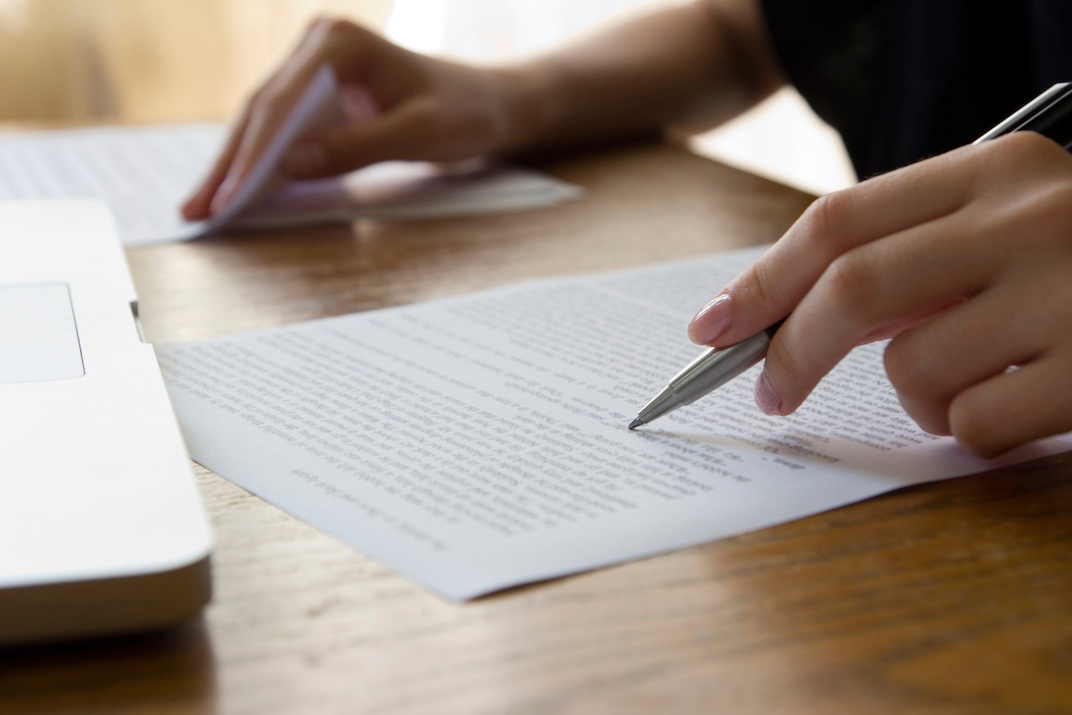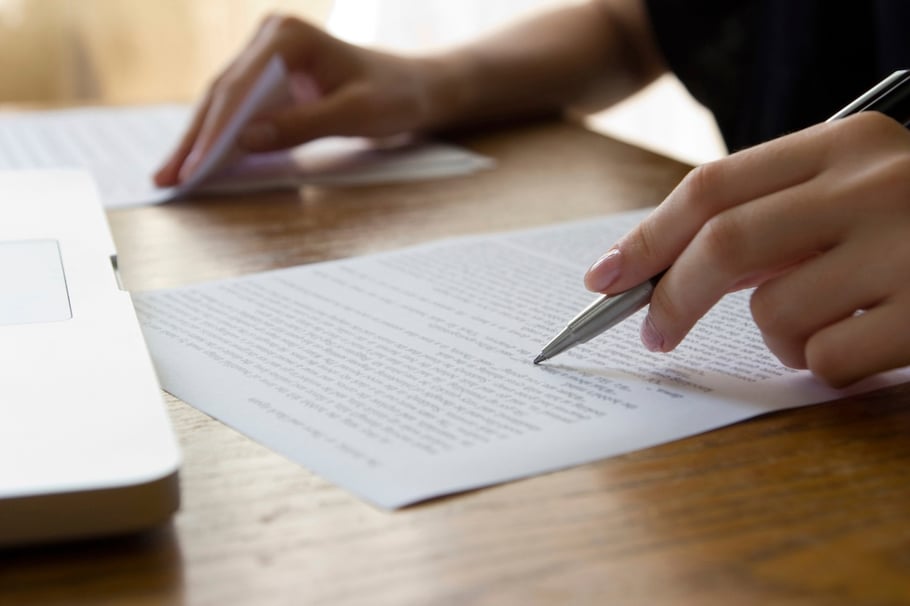
6 Tips for Copyediting E-Books
June 9, 2016

E-books, so essential to an overall inbound marketing strategy, can also be the most daunting part of that strategy. Because e-books and whitepapers are long-form, they not only take longer to write, but also require more time to edit, prepare, and promote after a draft is submitted. In fact, it’s all those extra steps that may prevent marketers from even attempting an e-book.
Copyediting e-books may cause most concern. Many marketers are decent writers but struggle with improving and fixing text, whether it’s their own or, especially, someone else’s. However, the task doesn’t need to be as frightening as it might initially seem. An e-book doesn’t have to be perfect prose—just direct, understandable, and grammatically sound.
That said, catching any errors or problems early is important because once an e-book is designed and published, fixing any mistakes to a PDF file becomes more of a hassle than if you are editing in Word or Google Docs. Moreover, unlike a blog post that can be easily updated without a trace of the previous error, a downloaded e-book with a glaring mistake permanently exists on the hard drive of the downloader. Therefore, you want to ensure your premium content is as clean as possible before you publish. No pressure at all, right?
Don’t sweat the editing process too much. Create a plan, devote some time to sit down and read the copy, enlist help from co-workers if needed (especially if it’s your copy—a second set of eyes never hurts), and tackle the job. And if an error does slip through—and this happens to even the most experienced copy editors—don’t beat yourself up; fix the problem and move on. Here are six tips for copyediting e-books that will help content sparkle for your leads:
1. Take your time
You might look at a 3,000-word e-book and wonder how you will ever find time in your busy schedule to edit the whole thing. And for one that size, you should ideally devote at least two hours to review and improve the text. However, those hours do not need to be consecutive. Splitting the task into chunks is preferable to trying to rush though the e-book or not editing at all. A half-hour here, 15 minutes there can be more manageable if you are pressed for time—or if you struggle with copyediting in the first place.
2. Stay on target
Inbound marketing e-books often follow a similar strategy to blog posts in that both are targeted toward a specific persona. Yet, some content will meander among multiple personas, not quite speaking enough to one and possibly confusing the reader into thinking “This e-book isn’t for me.” As you copyedit, keep the target persona in mind, and be ready to revise if the content strays too far from its original goal. Alternately, if the e-book is intended to be more general, pay attention in case it does focus too much on one persona than the others.
3. Strive for consistency
Readers usually don’t care how you hyphenate words or if you use serial commas, but interestingly, they will often notice if you go back and forth between styles. An important function of copyediting is to ensure consistency throughout the document. And that consistency doesn’t just apply to grammar and spelling—it should also apply to the basic structure of the e-book. For example, if the copy is intended to be written in third person, then it shouldn’t abruptly switch to first or second person halfway through. There’s no right or wrong way to approach style and structure for your e-book, but pick one and stick to it.
4. Don’t get bogged down with text
A typical 3,000-word document is, well, many words. Although some of that text will be prettied up during the design process, you can take steps during editing to reduce the large blocks of copy that can easily intimidate and, ultimately, lose the reader. Adding headers and subheaders, bullet points, bold text and lead-ins, and even just extra paragraph breaks can shake up the copy and promote a user-friendly design.
5. Read it out loud
One of my favorite tips for novice copyeditors is to, on your last pass through a document, read the text out loud, saying each word slowly and deliberately. You will be amazed what you catch that you might not have upon your first or second edit of the document—remember, spell and grammar checks built into word processing applications are far from perfect. For a long e-book, an out-loud read will take some time, so again, don’t be afraid to split your editing sessions up. Moreover, if you are in a place you can’t readily speak out loud, just saying the words in your mind is better than nothing.
6. After design
Your e-book is written, edited, and designed! You’re ready to publish after all that hard work, but you should take one more quick proofreading pass of the finished product before pulling the trigger. Mistakes can happen during the design process—a paragraph break gets deleted, text isn’t correctly pasted over, and so on—that you don’t want to show up on your download. This final copyedit doesn’t have to be long. Look at all the display type (headers, captions, and such); if you have a table of contents, make sure that the page numbers match; and give a quick overall read to confirm the right text is in the right place. Better to catch any remaining errors now than have a reader e-mailing to inform you of a bad header.
How much time do you set aside to editing your inbound marketing e-books?

About the author
Joe Gillespie is Director of Inbound Copy for SmartBug Media. He graduated from Marquette University with a B.A. in journalism and, before coming to SmartBug, was a two-decade veteran of the newspaper industry. Read more articles by Joe Gillespie.






